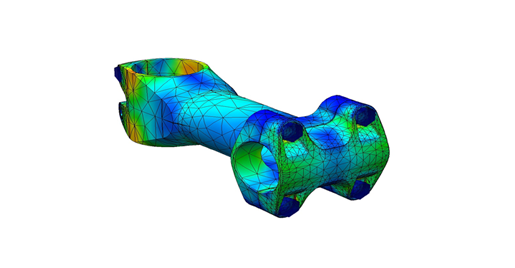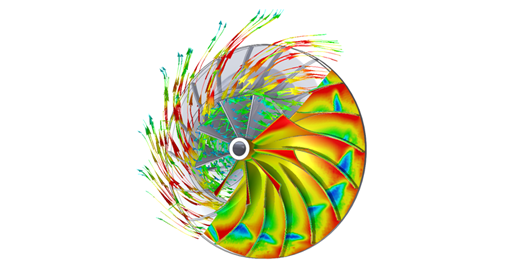Finite Element Method (FEM) Solutions

Fundamentally, it relies on the discretisation of the geometry to solve mechanical and thermal equations, effectively subdividing the structure in an assembly of simple (finite) elements. Instead of tackling a big problem directly, we divide it into smaller and more easily solvable problems and then get a unique result for the system as a whole.
The discrete model is an approximation of the behaviour of the real physical structure. However, provided that the discretisation mesh is dense enough, the approximation is sufficient to accurately model reality.
The practical advantages of using FEA have led many sectors to make it a fundamental part of their design processes.
Benefits of Finite Element Method (FEM)
- Helps you to better understand your product’s mechanical and thermal performance inch by inch.
- Helps you identify possible failure spots and failure modes.
- Enables virtual testing in a fraction of time and cost compared to laboratory testing, eliminating the need for expensive prototypes.
- Enables product and process optimisation by quickly adjusting the design and simulating its performance.
- FEM produces a much more detailed set of results than experimental investigations and is often quicker and less expensive.
- Comprehensive result sets, generating the physical response of the system at any location, including some which might have been neglected in an analytical approach.
- Safe simulation of potentially dangerous, destructive or impractical
- load conditions and failure modes.
- Optimal use of a model. Often, several failure modes or physical events
- can be tested within a common model.
- The simultaneous calculation and visual representation of a wide variety of physical parameters such as stress or temperature, enabling the designer to rapidly analyse performance and possible modifications.
- Extrapolation of existing experimental results via parametric analyses of validated models.
- Relatively low investment and rapid calculation time for most applications.
![]()
What we can do at Rototech?

Please contact us in case if you require FEM solutions. We will analyse your structure/ piece of equipment and provide the FE analysis report with recommendations.
Below services are available @ Rototech 24×7 which is led by a team of specialist engineers. Contact us if you have any issues/concerns in the below field.
- Do you design your own products or manufacturing processes?
- Are your products optimised in terms of materials use, manufacturing costs or performance?
- Have you got reliability issues, field service complaints or high warranty costs?

Finite element solution process
The set of equations and the process by which they are solved varies depending on the problem (thermal, mechanical, linear, non-linear) as well as the software used to compute it. Nevertheless, the general structure is common to all finite element methods:
- Discretise the structure into smaller elements, creating a mesh.
- Assemble the elements at the nodes, implementing the required contacts and boundary conditions between the different model components, to form a system of equations approximating the real solution.
- Solve the system of equations using computational resources.
- Post-process the results to compute the desired quantities (e.g. stress, displacement, temperature) for the entire domain.
- The benefits of FEA (Finite Element Analysis) include the visual representation of stress or temperature gradients throughout the part as well as enabling the designer to rapidly analyse modifications in the product or process.
![]()


